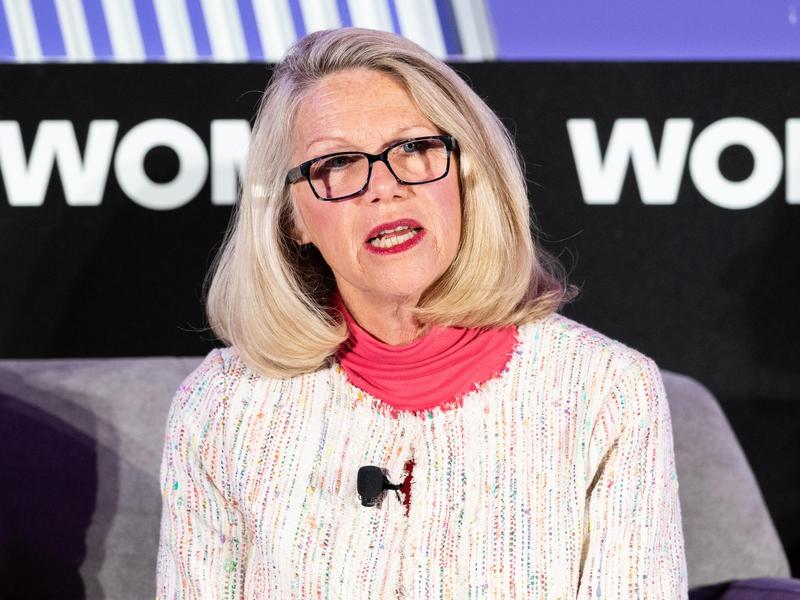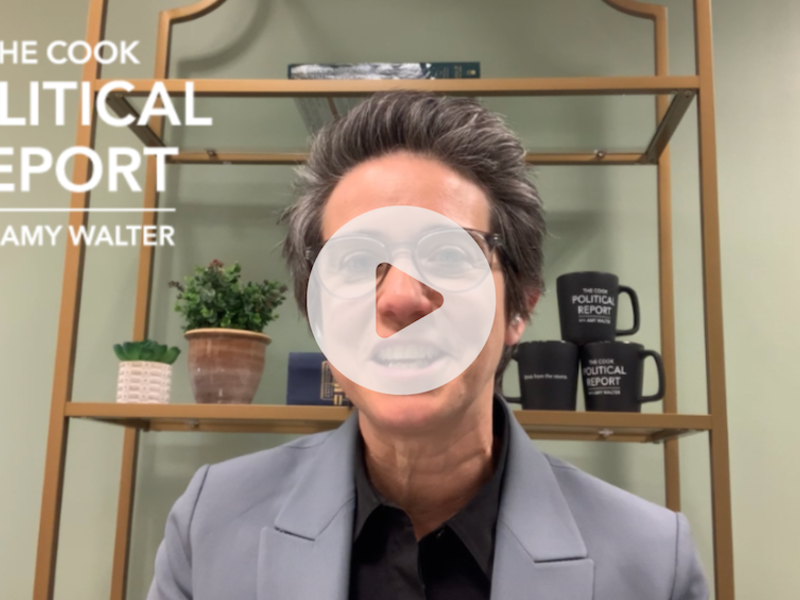
Any conversation about the 2022 midterms and the 2024 presidential election inevitably veers to former President Trump, including the role he will play and whether the Republican Party will functionally be an extension of him, for better or for worse. My hunch is that Trumpism in all of its potency is here for the foreseeable future, and that it will outlast him as a force in the party and country.
There are few signs that many Republicans have turned on Trump. His overall image rating among Republicans and Republican-leaning independents is little diminished. There are clear signs that the enthusiasm for him—in other words, his force as a person—is waning, but there are no signs that his message and positions on key issues are similarly losing that intensity of support.
This column last week analyzed an April NBC News national poll conducted by Hart Research and Public Opinion Strategies—top Democratic and Republican survey firms, respectively. The data showed that, since an October poll that the two firms conducted for NBC and The Wall Street Journal, the share of Republicans who identify themselves as more loyal to Trump than to the party had declined from 54 percent to 44 percent; meanwhile, the share of those professing more loyalty to the party than to the personality had increased from 38 percent to 50 percent. Equally importantly, among those who continue to be more loyal to Trump than to the party, the share who rated their feelings for him as “very positive” declined from 91 to 75 percent, reflecting a shift toward somewhat positive or neutral feelings rather than negative. The share among those more loyal to the party than to Trump who still saw him very positively declined from 50 percent to just 31 percent, again shifting more to neutral and, to a lesser extent, to somewhat negative.
Sifting through a mountain of recent data measuring the intensity of Republicans’ feelings toward Trump drew me to Economist/YouGov polling (not one of my favorite surveys, but they do ask the question I was looking for more regularly than any other). Among all Republicans and GOP-leaning independents, the share rating him “very favorable” through dozens of polls last year normally landed in the mid-60s to mid-70s, reaching as high as 78 percent. Since late February, however, that number landed in the 50s in seven out of eight polls—with the lowest at 55 percent and the highest at 61 percent. The share of Republicans viewing him negatively increased only a little; the shift was primarily from very favorable to somewhat favorable.
Longtime and wise political analyst Jeff Greenfield argued in Politico Magazine and in a podcast with Ryan Lizza that any suggestion of a GOP civil war between the pro- and anti-Trump forces was wrong—that it was really more of a purge of officials who were not loyal to Trump. I was persuaded by Greenfield’s argument, though I did disagree with some of it.
The decline of GOP enthusiasm and intensity for Trump, even while Republicans have not totally turned against him, suggests that he is increasingly seen as a quirky personality—a flawed vehicle for a powerful message that is showing no signs of abatement—and that a post-Trump Trumpism is on the horizon.
Something has definitely changed. Trump’s initial nomination and election, followed by his 2020 renomination, amounted to the most dramatic change in the GOP in three-quarters of a century. Look at the 17 GOP nominees prior to Trump. The most recent five were George H.W. Bush, Bob Dole, George W. Bush, John McCain, and Mitt Romney, all direct political descendants of most of the earlier generation of post-World War II nomination winners: Tom Dewey (1948), Dwight Eisenhower (1952 and 1956), Richard Nixon (1960, 1968, and 1972), and Gerald Ford (1976).
Fourteen were part of a clear pattern, and the few exceptions may be less a departure than one might think. While Barry Goldwater (1964), who served in the Senate for decades, was no card-carrying member of the East Coast establishment GOP, "Au H2O" was hardly an outsider; he just represented a very pure form of conservatism. Arguably, Ronald Reagan was an outsider in his 1976 challenge to Ford; but for Reagan’s nominations in 1980 and '84, he had moved a couple of steps toward the establishment and the establishment three or four steps toward him.
Trumpism boiled down to its essence—the nationalism, isolationism, and protectionism underlying his America First message, combined with populism and culture-war-fighting, anti-immigration stances and rhetoric and arguably more than a little ethnocentrism, and a strong attachment to a religious coalition of evangelical white protestants, conservative white Catholics, and those of the Orthodox Jewish faith—had little in common with the views represented by the previous 17 nominations. Instead, it came from Pat Buchanan and his 1992 and 1996 presidential campaigns, and from Sarah Palin’s 2008 vice presidential campaign.
Unquestionably there is a segment of the GOP that will remain steadfastly loyal to Trump until the day they die. But I suspect you will see a party that embraced much of what Trump said but will be looking for a less-flawed candidate to push that agenda, something that Democrats might not want to see. Most Republicans, and even many of Trump’s backers, acknowledge that he was often his own worst enemy.
That does not mean that the GOP is going back to what it was. It's more likely to just go with someone new.
This article was originally published for the National Journal on May 17, 2021.








Subscribe Today
Our subscribers have first access to individual race pages for each House, Senate and Governors race, which will include race ratings (each race is rated on a seven-point scale) and a narrative analysis pertaining to that race.